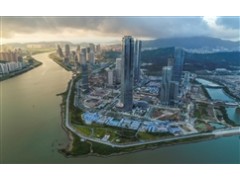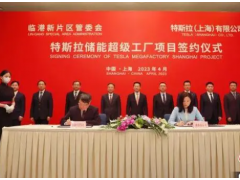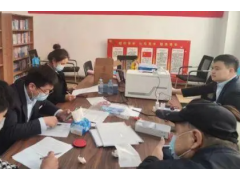The Senate of the Philippine Congress officially approved the Regional Comprehensive Economic Partnership Agreement (RCEP) a few days ago, clearing the last domestic obstacle for the implementation of RCEP in the Philippines.
Philippine economic officials, experts and scholars believe that the implementation of RCEP will help promote the liberalization and facilitation of Philippine trade and investment, help it better integrate into the global supply chain, and promote the sustained growth of the Philippine economy through regional and global trade and increased investment in strategic sectors. , bringing tangible benefits to the Filipino people.
It is more convenient to eliminate barriers to trade and investment
RCEP currently has 15 member countries, including China, Japan, South Korea, Australia, New Zealand, and 10 ASEAN countries, all of which account for about 30% of the global total in terms of population, economic volume, and total trade volume. Since it came into effect on January 1, 2022, the policy dividends of RCEP have been continuously released, becoming an important highlight of world economic growth.
Arsenio Balisacan, director of the National Economic and Development Bureau of the Philippines, said that RCEP is a powerful engine for promoting regional economic integration and stimulating economic growth in the Philippines in the post-epidemic era.
He said that on the one hand, the Philippines' approval of RCEP will expand market access, reduce tariffs, make cross-border trade easier and more efficient, and help it become an ideal manufacturing and R&D center; on the other hand, the Philippines will provide foreign investors with clearer rules. , A more stable business environment will help the Philippines become a more attractive investment destination.
Balisakan also said that under the RCEP framework, strong business expansion and investment by foreign companies and local Filipino companies will increase employment opportunities, which in turn will promote sustained poverty reduction and help the Philippines achieve the overall goal of the 2023-2028 National Development Plan. Target.
Philippine Finance Minister Benjamin Diokno believes that after RCEP comes into effect for the Philippines, Philippine products will have more opportunities to enter a larger market, and Philippine manufacturers will have a wider range of choice of raw material sources. Philippine laws, construction, engineering and Skilled professionals and business people in the field of banking services also have the opportunity to travel to other RCEP member countries for professional work.
Adding power to empower economic growth
President of the Philippine Senate Juan Suweiri said that RCEP will integrate existing regional free trade agreements into a more "modern, comprehensive, high-quality, mutually beneficial economic partnership agreement", and the implementation of RCEP will effectively stimulate the economic potential of the Philippines.
According to research data from the Philippine Development Institute, the approval of RCEP is expected to increase Philippine exports by 10.47%, driving the Philippines' real GDP growth by 2.02%.
"We must make good use of the advantages of RCEP." Philippine Budget and Management Secretary Amena Pangandaman said that RCEP will bring better opportunities to the people and help the Philippines achieve prosperity.
The Philippines is an important exporter of agricultural products in Southeast Asia, and its agricultural development has always attracted the attention of Filipinos. According to data from the Philippine Department of Agriculture, about a quarter of the country's employed population will come from the agricultural sector in 2021, with more than 10 million people working on farms. Agriculture accounts for 9.6% of the Philippine economy.
Bali Sakan bluntly said that the approval of RCEP will promote the competitiveness and productivity of the agricultural sector, and prompt it to further strengthen its own agricultural value chain.
Expand advantages and share big market opportunities
Against the backdrop of rising anti-globalization trends and sluggish world economic recovery, China's high-quality implementation of RCEP will bring new development opportunities to the Philippines and inject new impetus into the development and prosperity of the Asia-Pacific and the world.
According to data from the Ministry of Commerce of China, from January to November 2022, the total import and export volume between China and other RCEP member countries was 11.8 trillion yuan, a year-on-year increase of 7.9%, accounting for 30.7% of China's total foreign trade import and export.
Many Philippine experts believe that the Philippines should make full use of its advantages in the field of business and professional services, and actively grasp the market access opportunities of China, an important participant in regional economic cooperation.
At present, China and the Philippines have established four key areas of cooperation in agriculture, infrastructure, energy, and people-to-people and cultural exchanges. Taking agriculture as an example, from bananas, pineapples, and mangoes to avocados, young coconuts, and durians, the huge Chinese market is constantly bringing business opportunities to the Philippines, creating employment opportunities and increasing income for local farmers.
Anna Malenberg-Uy, deputy director of the Philippine "Asian Century" Strategic Research Institute, said that under the RCEP mechanism and framework, Filipino farmers can export their products to the Chinese market with the help of more favorable and convenient trade arrangements.




